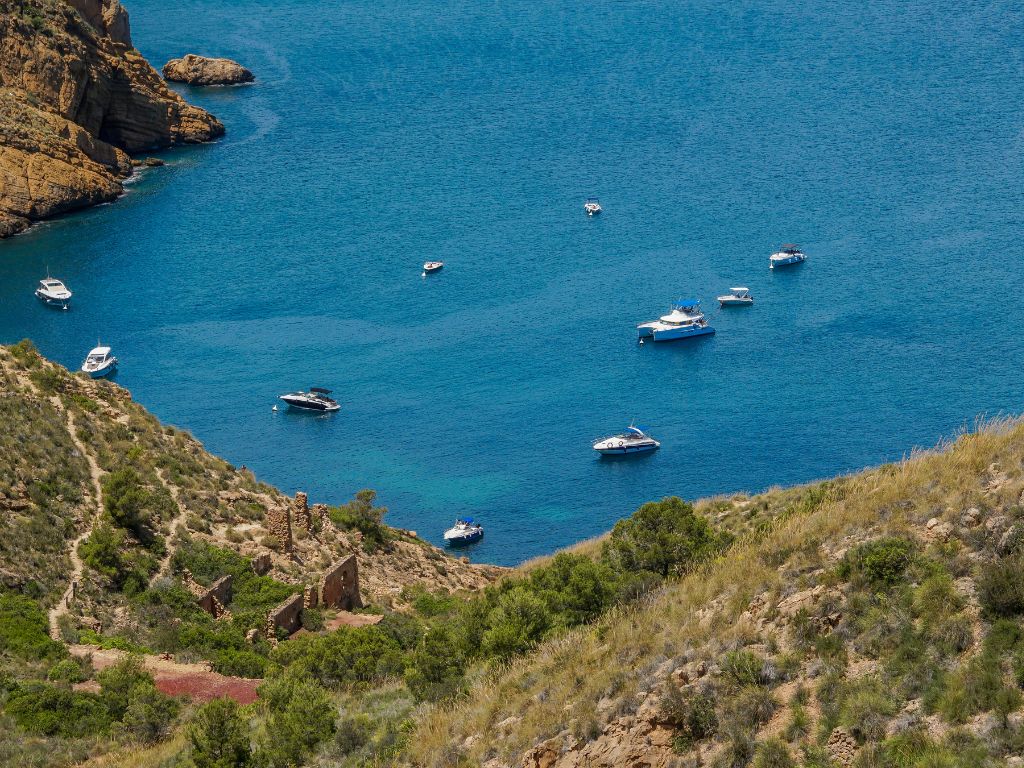What to bear in mind when anchoring in Mediterranean coves?
Anchoring in a Mediterranean cove is one of the most pleasurable experiences that sailing has to offer. Enjoying crystal clear waters, surrounded by cliffs and unspoilt nature, is a luxury available to those who know how to do it safely and responsibly. However, behind this tranquillity there are a series of key aspects that every sailor should consider.
Next, we will explore the essential elements to enjoy a Mediterranean cove without mishaps and respecting its ecosystem.
Choosing the perfect place to anchor
Not all coves are the same, and finding the ideal one to anchor in requires a little planning. Before arriving, it is useful to study nautical maps or specific applications to identify the type of seabed and the natural protection offered by the cove against winds or currents.
In general, the best coves for anchoring are those with sandy bottoms and surrounded by rock formations that act as barriers against the prevailing winds. Also, be sure to avoid areas with a high concentration of boats, not only for your safety, but also for peace and quiet.
How to protect the ecosystem
The Mediterranean is home to a fragile underwater ecosystem, and improper anchoring can cause irreversible damage. Posidonia oceanica, a marine plant essential for biodiversity, often grows in many coves and is protected by local laws in many places.
Before dropping anchor, make sure that the bottom is sandy, not posidonia. There are ecological buoys in some coves that make it easier to anchor without using the anchor. Also, remember to always pick up your rubbish and not to throw anything into the sea. The beauty of these coves depends on our ability to preserve them.
Preparation before anchoring
Good anchoring begins before you drop anchor. Some essential points to check:
Anchor check: Make sure that the anchor is in good condition and that the chain is properly stowed.
Weather conditions: Check the weather forecast to avoid unpleasant surprises. Apps such as Navily or Windy are useful tools for wind, tides and currents.
Depth: Check the depth of the inlet to ensure that your boat will have enough room to manoeuvre even with changes in the tide.
Safe anchoring techniques
Once you have identified the perfect spot, follow these steps for safe anchoring:
Release the anchor slowly as the boat moves astern at low speed. This allows the anchor to set properly.
Check the grip: Once at anchor, use the engine to make sure the anchor is firm. If the boat moves when force is applied, it will be necessary to re-anchor.
Control the bore radius: This is the space your boat needs to move depending on the length of the chain and the wind. Keep a safe distance from other boats and the coast.
Enjoying the cove responsibly
Once at anchor, it’s time to enjoy yourself. Mediterranean coves are perfect for swimming, snorkelling or simply relaxing on deck. However, it is always important to keep an eye on the weather conditions and make sure that the boat has not shifted position due to wind or currents.
Finally, remember that anchoring is not only about enjoying the place, but also about taking care of it so that others can do so in the future. Respecting local rules, protecting biodiversity and acting with common sense are the keys to a memorable experience.
In conclusion, anchoring in Mediterranean coves can be the most magical moment of any voyage. But like everything in sailing, it requires preparation, attention and respect for the environment. By following these recommendations, you will not only guarantee a safe experience, but you will also contribute to preserving the beauty of these unique spots for future generations. Enjoy the sea responsibly and experience the Mediterranean like never before!
Other news that may interest you
- How to choose the right Crownline model for your lifestyle
- What to bear in mind when anchoring in Mediterranean coves?
- What makes Crownline a leader in recreational boating?
- Apps and technology that make sailing easier for beginners: Navigating has never been easier
- Tips for basic boat maintenance: Keep your boat ready to sail at all times

